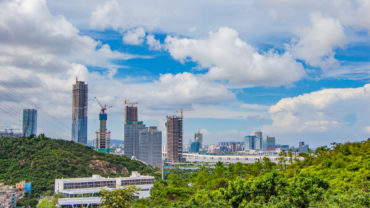Time is ticking fast as we strive to implement the Paris Agreement in time to keep the global temperature rise this century to 1.5 degrees Celsius. In many places, low carbon energy solutions are key to realizing this goal.
This is why a small project team at UNEP DTU Partnership’s Copenhagen Centre for Energy Efficiency (C2E2) went all in when they got a call to assist Mongolia and the UN Environment Programme (UNEP) in conducting a series of studies and develop a proposal to scale up implementation of low carbon district heating systems in Mongolia.
District heating potentials
Mongolia is characterized by its sharp continental climate with drops in air temperature down to -40o C during winter. Almost 90 percent of Mongolia’s overall energy supply is used for heating purposes and in 2014, the energy sector – mainly reliant on coal – accounted for half of the total national greenhouse gas emissions.
The Technology Needs Assessment (TNA) for Mongolia highlights energy security and a diversion from coal as a priority goal of the energy supply sector and stresses the mitigation potential in improved heating systems.
Outside the capital of Ulaanbaatar, however, many districts are not connected to district heating and rely on low efficiency water boilers that run on fossil fuels. Not only does the use of coal cause increased emissions, it also leads to high levels of pollution and great health risks for the population.
In March 2019, UNEP contracted the team in Copenhagen to carry out a readiness project in Mongolia building on the national priorities and the ambitions set forth in their TNA. The project aimed to assess the potential for scaling up the use of alternative low carbon energy sources and increase energy efficiency in district heating systems as preparation for a comprehensive project proposal to the Green Climate Fund (GCF).
Quick progress
The C2E2 team went on two missions in Mongolia, visiting eleven different sites to scope out potentials for upscaling district energy systems and assess their readiness through stakeholder meetings and site visits.
Based on a mission report they carried out a rapid assessment to identify the potential of all these sites for further implementation. From this, the three most suitable sites were selected and the researchers then conducted a full feasibility study including a deep dive technical and economic analysis including potential business models.
Finally, they combined the feasibility study with environmental, social, and gender assessments in preparation for the complete funding proposal to the GCF, which is now pending decision.
In just nine months from signing the contract in March 2019, the project team finalised two rounds of feasibility studies and wrote up a comprehensive GCF project proposal, proving that with great collaboration and willingness to act fast results are possible.

